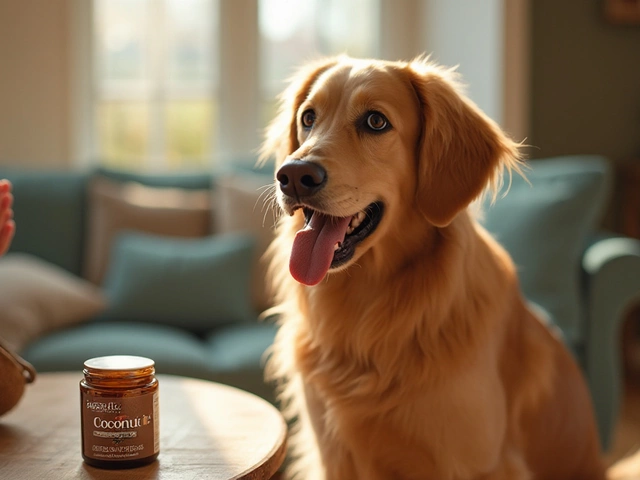Ever stood in front of the cat food aisle, totally overwhelmed? Yeah, me too—especially with Whiskers meowing her opinion at every can. With endless choices, you can’t help but wonder: is there really one “best” cat food out there, or is it all hype?
The truth is, cats need certain things in their diet—like animal protein, taurine, and moisture. If your cat skips out on those, you’ll see the effects pretty quickly in their energy, coat, and even litter box habits. There’s a reason vets and feline nutrition experts say to start with ingredients and nutrition facts, not just catchy claims like “natural” or “grain-free.”
If your cat turns their nose up at one brand but licks the bowl clean with another, your experience matters too. Real cats can be surprisingly picky about textures (Whiskers only likes pâté), so it's smart to test a few types before you buy in bulk. Don’t stress—you’re not the only one puzzling over ingredient lists and wondering if ‘by-products’ are evil or just misunderstood. (Spoiler: some are actually pretty nutritious.)
- What Makes Cat Food 'the Best'?
- Popular Picks: Vet-Approved and Cat-Tested
- How to Read Cat Food Labels (Without Getting Duped)
- Smart Shopping: Tips for Fussy Eaters and Tight Budgets
What Makes Cat Food 'the Best'?
When it comes to finding the best cat food, it’s really about what checks the right boxes for your cat’s health. Not all cat foods are created equal. The top foods start with real animal protein—think chicken, turkey, or salmon—as the first ingredient. Cats are obligate carnivores, which means they need animal protein to get vital nutrients like taurine and arachidonic acid (they can’t make these on their own).
Vet nutritionists agree that good cat nutrition is more about balance than exotic flavors or superfoods. Here’s what matters:
- High-quality protein: Animal-based, listed right at the top of the ingredients.
- Taurine and other amino acids: Essential for heart and eye health.
- Fat: Needed for energy and that shiny fur.
- Minimal fillers: Grains aren’t bad for every cat, but foods overloaded with corn or wheat over protein aren’t ideal.
- Moisture content: Wet foods or high-moisture diets help prevent kidney and urinary issues.
Cats also have very little thirst drive compared to other pets. That’s why many experts lean toward wet cat food—it naturally boosts hydration, especially for indoor cats who don’t drink much water from a bowl. If you do stick with dry, make sure fresh water is always available.
You might see trendy terms like “grain-free” or “no by-products.” Here’s a reality check: grain-free isn’t automatically healthier, unless your cat has a diagnosed allergy. And by-products? They can actually be nutritious, like organ meats cats would eat in the wild.
To make sense of it all, here’s a quick rundown of what to check in ingredients and nutrition labels when hunting for the best cat food:
- Animal protein at #1
- No artificial colors or weird preservatives (look for mixed tocopherols instead of BHA/BHT)
- Balanced with vitamins and minerals (A, D, E, zinc, etc.)
- Matches your cat’s life stage (kitten, adult, senior)
Here’s a real example of protein content from leading brands:
| Brand | Protein % (Dry Matter) | Main Protein Source |
|---|---|---|
| Hill's Science Diet Adult | 33% | Chicken |
| Purina Pro Plan | 41% | Turkey |
| Royal Canin Indoor | 34% | Chicken meal |
| Tiki Cat After Dark | 45% | Chicken/Liver |
If you want a healthy, lively cat (and a nice litter box situation), look at the facts over the hype—your cat will thank you for it.
Popular Picks: Vet-Approved and Cat-Tested
Let’s get real—no cat food is crowned champ by everyone, but there are brands and formulas that keep coming up in chat with vets, cat forums, and even my own kitchen (Whiskers tries everything, Rufus tries to steal everything). So, what makes these best cat food options stand out?
First up, brands vets often mention include Royal Canin, Hill’s Science Diet, and Purina Pro Plan. These aren’t just random picks—they’re backed by real nutrition research. Take Purina Pro Plan, for example: their formulas don’t just meet the basics, they often include extra protein or probiotics to boost digestion and immunity. The science isn’t just a sales pitch; it’s why you’ll see veterinarians feeding these to cats recovering from surgery or dealing with tummy troubles.
Don’t ignore “fancy feast” brands just because they’re everywhere. Fancy Feast Classic Pâté is actually high in protein and is a hit with picky eaters. Whiskers can be suspicious of new foods, but she finished her bowl the first time I tried it.
On the other end, if you’re looking for grain-free cat food, Blue Buffalo and Wellness Core tend to pop up—just remember: grain-free isn’t automatically better. Some cats need it (like if they have allergies), but for most, meat protein is the bigger deal. Watch out for alternatives that swap out grains for a ton of peas or potatoes; too many can mess with digestion.
Here’s a quick look at vets’ top picks, plus what real cats (and their humans) say about taste and effects:
| Brand | Main Protein | Notes | Common Feedback |
|---|---|---|---|
| Royal Canin Feline Health | Chicken | Great for sensitive stomachs | Easy to digest, helps coat quality |
| Purina Pro Plan Savor | Salmon, Chicken | Probiotics for digestion | Most cats love the flavor |
| Hill’s Science Diet | Chicken, Turkey | Good for specific health needs (hairball, urinary, etc.) | Not the cheapest but reliable |
| Fancy Feast Classic Pâté | Variety | High protein, low carb | Picky cats approve, affordable |
Quick tip: Always double-check with your vet if you’re tempted by something ‘premium’ or boutique. Some brands look good on Instagram but don’t have any science behind them.
Switching foods? Do it slow—mix a little of the new with the old over a week to dodge stomach upsets. If your cat has a medical issue like urinary crystals or diabetes, ask your vet for a prescription option. Yes, they cost more, but they actually help solve the problem.

How to Read Cat Food Labels (Without Getting Duped)
Those labels on cat food packages can look like they're written in code. But you don’t have to be a vet or a scientist to figure out what’s good—and what’s just marketing. There’s a method to the madness if you know where to look.
The first ingredient on the list is super important. Ingredients are listed by weight before cooking, so if you see “chicken” or “salmon” listed first, you’re off to a strong start. Meat, poultry, or fish proteins are what your cat’s body craves most—think healthy cat food priorities here. If “corn” or “wheat gluten” comes first, that’s not ideal. Carbs just shouldn’t be the star.
Taurine is another biggie. All cats absolutely need taurine to keep their hearts and eyes ticking. It’s usually added right at the end of the ingredients list, but don’t freak out—that’s normal. Even premium grain-free cat food tosses in synthetic taurine, because it’s destroyed in cooking.
Here’s a tip: skip foods with a long list of artificial colors and flavors. Cats really don’t care if their food is red or green—those dyes are for humans, not for your furball.
"Look for food with animal protein as the first ingredient and clear labeling on nutrients like taurine, vitamins and minerals. If a label is vague—like ‘meat meal’ versus ‘chicken meal’—pick the clearer option."
—Dr. Lisa Pierson, DVM, feline nutrition specialist
When brands say “by-products,” don’t panic. Chicken by-product meal, for example, can be rich in organ meats, which are actually super good for cats. But steer clear of super vague things like “animal digest”—that’s a whole other (less appetizing) story.
- Check protein percentage: Around 30–40% protein (on a dry matter basis) is ideal for most cats.
- Moisture content: Wet food often has at least 75% moisture, which helps keep your cat hydrated.
- Avoid lots of fillers: Soy, corn, and wheat fill the kibble but not your cat.
- AAFCO statement: Make sure the label says it’s “complete and balanced” for your cat’s life stage—that’s not just a slogan, it’s a real nutritional baseline.
| Label Term | What It Actually Means |
|---|---|
| Chicken (or meat) as first ingredient | Main protein comes from animal; good sign |
| By-product meal | Can include nutritious organs; not necessarily bad |
| Animal digest | Usually lower quality and less specific |
| Grain-free | No wheat/corn/soy, but read for peas, lentils, etc. |
If you don’t want to be fooled by buzzwords, remember: clear, honest labeling wins over fancy packaging every single time. If you’re still puzzled, call the company’s customer service—good brands are happy to explain what’s in the bag.
Smart Shopping: Tips for Fussy Eaters and Tight Budgets
Trying to feed a picky cat without blowing your budget can feel like a balancing act. If your cat sniffs and walks away from dinner, you’re not alone. My cat Whiskers once ignored three brands in a row until I found a texture she liked.
Here’s the trick: you don’t have to chase the fanciest or priciest option. Some best cat food labels are more about marketing than nutrition. Instead, focus on what actually matters for cats and wallets alike.
- Buy smaller bags or single cans until you know what your cat likes. Bulk deals are great, but not if the food gathers dust.
- Look for sample packs—many brands now offer small trial options just for picky cats.
- Check unit prices, not just sale stickers. Sometimes the bigger bag isn't really cheaper per pound.
- Stores often have loyalty cards, coupons, or auto-ship discounts. Signing up could take a few bucks off your monthly order.
If your cat's really stubborn, try mixing a small amount of the new food with their old favorite. This slow switch helps prevent stomach issues and makes new options less scary for them. If you're trying to upgrade to a healthier cat nutrition formula, patience is key—it can take a week or more before your cat gives new food a real shot.
Balance cost with quality. Even store brands can be solid picks if the first ingredient is an identifiable animal protein, not “meat by-products.” Bonus points if the food is formulated to meet AAFCO standards (that’s the Association of American Feed Control Officials—the group that sets real standards for pet food in the US).
| Average Monthly Feeding Cost (USA) | Type |
|---|---|
| $10 - $25 | Basic store-brand dry food (for 10-lb cat) |
| $20 - $35 | Premium dry food |
| $40 - $70 | Premium wet/canned food |
If your cat still won’t eat, talk with your vet before changing too much. Some health issues can cause appetite swings. And if you find a winner, stick with it—but double check the label now and then. Brands change recipes sometimes, and cats can suddenly get fussy again (just ask Whiskers).





